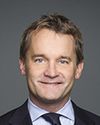Thank you, Madam Chair.
Good morning, everyone. Since I just found out yesterday that I would be here today, I have no document to submit.
First, I will go over my career. I have worked in museums for almost 50 years. I have been an observer of the museum cultural scene for all that time. I have participated in the creation and renovation of about 250 museums around the world, but mostly in Quebec. About 50 of them are in Europe, including France, Sweden, Portugal and the United States. I have worked in various capacities, either as a museum planning designer—this is the step prior to the work of architects—or as promoter of ongoing projects supporting the architectural or operational plan and developing themes. I have also worked with collections. I have created around 40 permanent exhibitions for museums, heritage sites and other places. This morning, I would like to talk about the development of museums over the past 50 years.
Before the 1970s, we had what I call “the museology of objects”. Let me illustrate with a simple equation. A museum is a building to which collections are added and that has visitors in addition to curators who look after the collections. In the 1970s, a worldwide movement emerged as what was called “new museology”, which led to eco-museums and interpretive centres. The dimensions of the equation then changed. The new museums consisted of a piece of land, not just a building. For instance, in a national park, which covers a large area, an interpretive centre was set up to provide information about the land. Instead of presenting a collection of objects, the centre handles all the heritage assets on that land. Visitors, and often the general public, take part in its development. That’s another level, which I call the “museum of subjects”. So there were both objects and subjects.
In the past 15 years, a new type of museology has developed, which, in my opinion, is the model local museums increasingly aspire to. They are not necessarily major museums, but they are close to their communities and their people. I have called this trend the “museology of ideas”. So we are moving to a much more abstract level, where the museum is, as I call it, a “community museum”. The community museum includes a society and its challenges, in addition to problems that need solutions. The dynamic forces of the public are demanding change. This is why many museums are now talking about sustainable development and climate change. In fact, they are addressing difficult topics, consulting their people and organizing exhibitions. The Écomusée du fier monde, in Montreal, is quite a remarkable example of what can be done at the social level as well as in terms of cultural development and sustainable development.
I have painted a picture of museology as I have seen it over 50 years. In my view, this will enable museums to become development tools that are much more effective than when they were part of the museology of objects. We have seen the museology of treasures followed by the museology of knowledge. We have now reached the museology of development stage.
The general conference of the International Council of Museums (ICOM) will be held in Milano in July. The theme will be precisely the change in cultural landscapes. In other words, we are no longer looking at objects, but rather subjects. In my view, this is a sign of new tools that museums can use.
In my view, to accomplish this, changes are needed in the attitudes of professionals, in funding, funding sources, the use of new communication and conservation technologies, and so on.
In a nutshell, that’s what I had to say about my view on the current situation.




